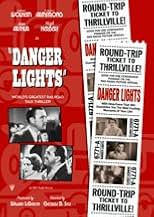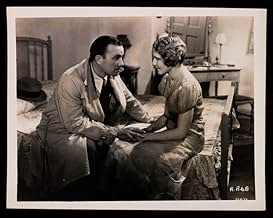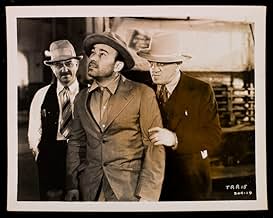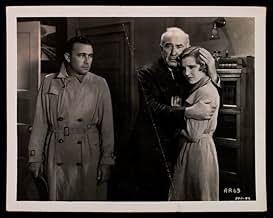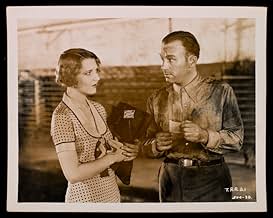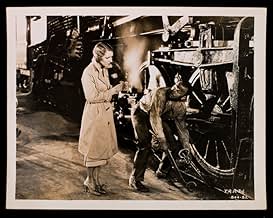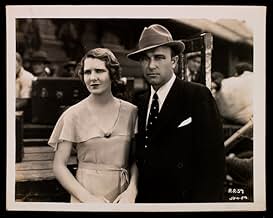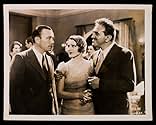Füge eine Handlung in deiner Sprache hinzuThe tough boss of a railroad yard befriends a young hobo, and unwittingly places in jeopardy his relationship with the woman he loves.The tough boss of a railroad yard befriends a young hobo, and unwittingly places in jeopardy his relationship with the woman he loves.The tough boss of a railroad yard befriends a young hobo, and unwittingly places in jeopardy his relationship with the woman he loves.
- Regie
- Drehbuch
- Hauptbesetzung
Jim Farley
- Joe Geraghty
- (as James Farley)
James Donlan
- Picnic Barker
- (Nicht genannt)
Frank Mills
- Hobo
- (Nicht genannt)
Lee Phelps
- Railroad Worker
- (Nicht genannt)
Empfohlene Bewertungen
I taped the movie from TV broadcast about 15 years ago. My wife saw the movie being filmed in Miles City, Montana ( 8 years old at that time ) She and her older sister and parents were thrilled to see Jean Arthur in person. I liked the railroad scenes. Jean Arthur has long been a favorite of mine. I have been a movie buff most of my life and have collected just about every format that was available to the public. Currently collecting DVDs
I give this film six stars, but it will likely be either a five or eight star movie for you depending on what interests you. 1930's "Other Mens' Women" was a love triangle set around the railroad yards. Conversely, "Danger Lights" is almost a documentary on railroads as they existed in 1930 with a love triangle thrown in to frame the railroad footage. It's almost like the filmmakers knew they were really documenting history more than filming a love story. You've got footage of a tug of war between two steam locomotives, actual documentary footage of the activities in the Miles City railroad yard, and to top it all off is the only footage of a dynamometer car from the steam railroad era. Since the emphasis is on the technology, you'd think this film would have the awkward dialogue of the early talkie era, but you'd be wrong. The actors behave and speak quite naturally. To top it all off, you're rewarded with a very early talking screen appearance by Jean Arthur who will become one of the great comic stars of the 1930's.
As for the love triangle, it's very formulaic. Railroad division chief Dan Thorn (Louis Wolheim) decides to help out drifter Larry Doyle (Robert Armstrong) with a job as fireman. Unfortunately for Thorn, it's basically love at first sight between his fiancé Mary Ryan and Larry. Dan and Mary have had an understanding for years. On Dan's part it's true love, but on Mary's part it has largely been gratitude for Dan supporting herself and her father after he was injured on the job. Dan doesn't notice what's going on between Mary and Larry because in actuality there is another woman in his life too - the railroad he runs.
If the love story doesn't impress, the imagery certainly will. Lots of time is spent showing men battling both machine and the elements trying to keep the trains going. Plus there's a pride in what they do that almost makes them all a part of the railroad themselves.
As for the love triangle, it's very formulaic. Railroad division chief Dan Thorn (Louis Wolheim) decides to help out drifter Larry Doyle (Robert Armstrong) with a job as fireman. Unfortunately for Thorn, it's basically love at first sight between his fiancé Mary Ryan and Larry. Dan and Mary have had an understanding for years. On Dan's part it's true love, but on Mary's part it has largely been gratitude for Dan supporting herself and her father after he was injured on the job. Dan doesn't notice what's going on between Mary and Larry because in actuality there is another woman in his life too - the railroad he runs.
If the love story doesn't impress, the imagery certainly will. Lots of time is spent showing men battling both machine and the elements trying to keep the trains going. Plus there's a pride in what they do that almost makes them all a part of the railroad themselves.
This film is billed as a love story (typical love triangle), but the human-to-human love story is left in the dust because the human-to-train love story is much more passionate. I won't tell you how the story ends, but if you love trains (especially steam trains), you will love watching this film. ALL the characters in this film are in love with trains, and you will be, too. Be sure not to miss the lightning train trip to Chicago. The one thing that could have improved this film would have been "brightening up" the night scenes. I have a copy of it in my library - go thou and do likewise (don't know if it can be rented).
I was lucky enough to tape a copy of this once when the local public television station ran it (no commercials!) cause it sure is hard to find. Its not the kind of movie you watch for the story (though it has one) or for it's great acting (its about as bad as "Plan 9 from Outer Space") but if you enjoy trains and a look back at all the work that went on behind the scenes to keep them running, this is the movie for you. One of only a few movies shot in "Natural Vision." I would love to see this projected in a theater where the large vistas would rally come alive.
The heart of this story is a retelling of the Arthurian love triangle. This time around the King rules a Milwaukee Road Railroad Yard with a brick-to-the-side-of-the-head management style not currently taught in the better business schools. He takes a wandering knight (in the guise of a hobo) under his wing only to have the knight and the Queen (O.K. the fiancé) fall in love.
Among the rest of the cast Hugh Herbert does a fine turn playing a Knight of the Road in almost Shakespearen comic relief. Other players do an adequate job, but the real star of the show is the period railroad equipment and operations. Towards the end of the movie we see some great shots of Chicago in the opening days of the Depression.
If you love trains this movie is a must. If you want another reason to see Jean Arthur the movie is worth a try.
Among the rest of the cast Hugh Herbert does a fine turn playing a Knight of the Road in almost Shakespearen comic relief. Other players do an adequate job, but the real star of the show is the period railroad equipment and operations. Towards the end of the movie we see some great shots of Chicago in the opening days of the Depression.
If you love trains this movie is a must. If you want another reason to see Jean Arthur the movie is worth a try.
Wusstest du schon
- WissenswertesFeatures rare footage of a tug of war between two steam locomotives, actual documentary footage of the activities in the Miles City yard, and what is believed to be the only motion picture footage of a dynamometer car from the steam railroad era.
- PatzerThe locomotive that arrives in Chicago is not the same one that started the journey. When Larry adds oil to the smoking "hotbox" en route, for example, the wheel has an outside journal box that he puts the oil into from a can. The locomotive that arrives in Chicago has an inside journal on this wheel (under the cab), a different type from the one it had earlier.
Top-Auswahl
Melde dich zum Bewerten an und greife auf die Watchlist für personalisierte Empfehlungen zu.
Details
- Laufzeit
- 1 Std. 14 Min.(74 min)
- Farbe
Zu dieser Seite beitragen
Bearbeitung vorschlagen oder fehlenden Inhalt hinzufügen

